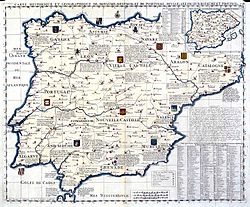| History of Spain |
|---|
 18th century map of Iberia |
| Timeline |
Articles on the modern history of Spain:
- Early Modern history of Spain
- Habsburg Spain (16th to 17th centuries) / Spanish Golden Age (1500-1681)
- Bourbon Spain (18th century)
- 19th-century Spain
- Restoration (Spain) (1874–1931)
- 20th-century Spain
- Second Spanish Republic (1931–1939)
- Francoist Spain (1936–1975)
- History of Spain (1975–present)